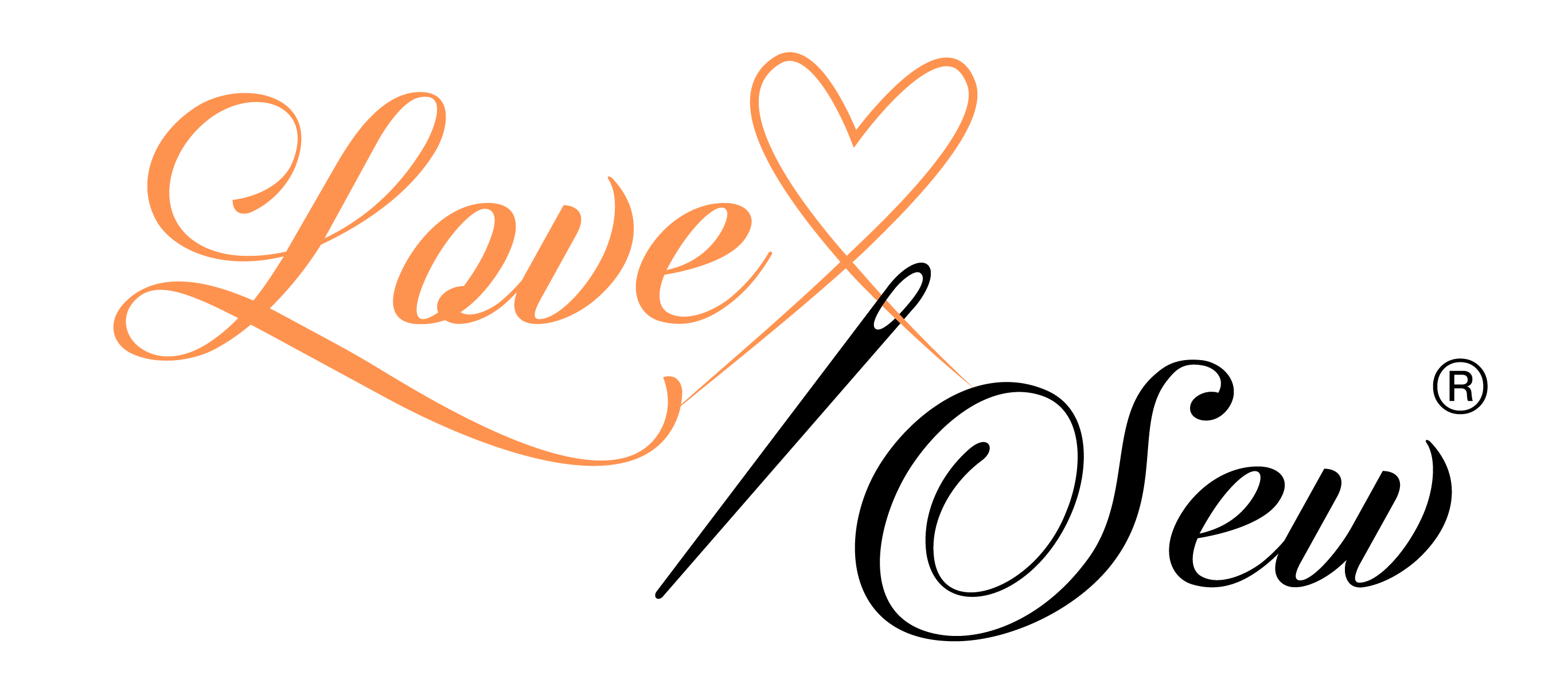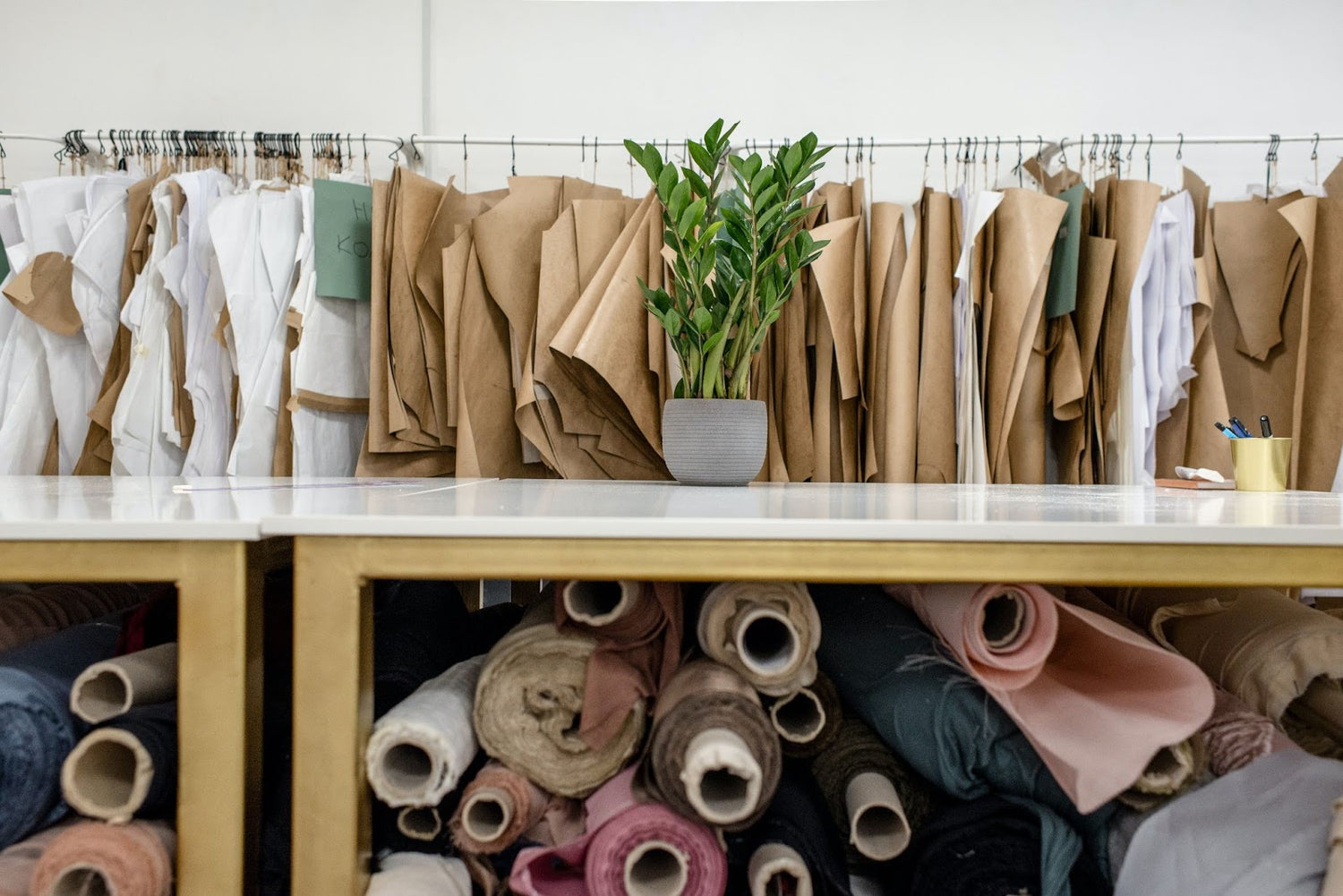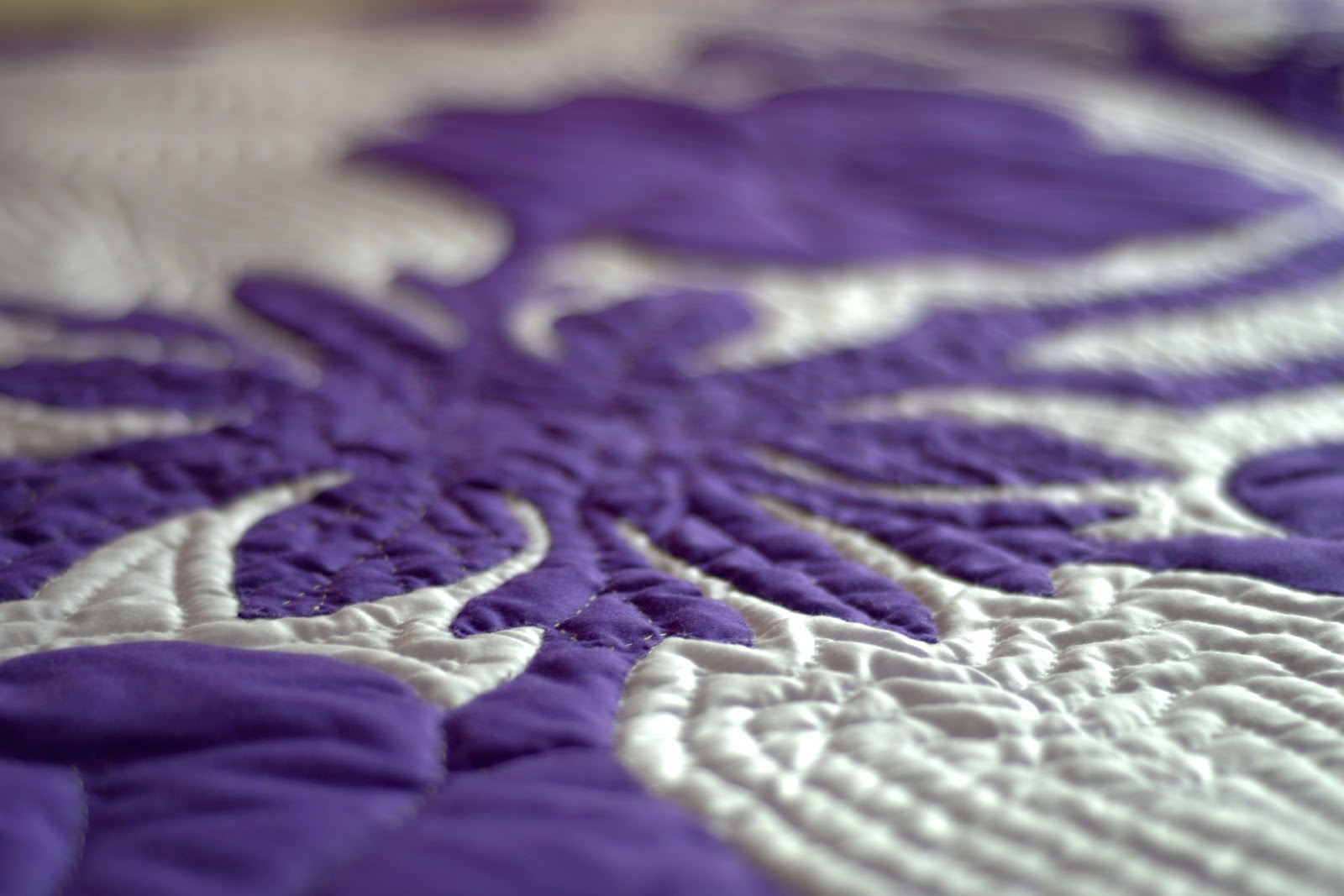Whether you’re a quilter or a seamstress, you’re definitely going to accumulate a variety of fabrics in different textures, prints, and finishes over time. With all this fabric lying around, your craft room may begin to get cluttered. That’s why it’s so important to have an efficient method of organization.
Organizing your fabric is important for a variety of reasons. Your fabric will take up less space, and it’ll be much easier to find the fabric you’re looking for. Plus, beautifully organized fabric can be a focal point in your sewing room. Whether or not you’re a big fan of organizing, it’s so worth it to keep your craft room neat.
Fabric Categories
The best way to organize your fabric is by category. This way, every fabric has a proper place, and it’s much easier to find the piece you’re looking for. There are a variety of different ways you can categorize your fabric, and we’ve gone through some of the easy methods below.
Organize By Color
One of the most visually pleasing ways to organize your fabric is by color. You can go in rainbow order, light to dark, pastels to brights, whatever you like! It looks really great displayed in a sewing room. Plus, it’s easy to pair different fabrics with similar, or contrasting, color schemes.
Organize By Fiber
Another possible way to organize your fabric is by fiber. There are two main categories of fabric fibers: natural and synthetic. Natural fibers come from natural resources, like plants and animals. Synthetic fibers are man-made. Examples of natural fibers include cotton, linen, wool, and silk, while synthetic fibers are things like polyester, rayon, spandex, and acrylic.
The benefit of dividing your fabrics into these two categories is that synthetic fabrics tend to behave like other synthetic fabrics, and natural fabric behave like other natural fabrics. For instance, most synthetic fabrics are flexible, stain-resistant, and water-resistant, while natural fabrics tend to be more durable and absorbent. Pairing fabrics with like properties together to make garments or other objects makes the whole process go more smoothly.
Organize By Weave
There are two main types of fabric weaves: woven and knit. Woven fabrics are made up of a series of lengthwise threads interlaced with crosswise threads, while knit fabrics are made from one long strand of interlocking yarn or thread.
Just like organizing your fabric by fiber, this method works because knit fabrics behave like other knits, and the same goes for wovens. Knit fabrics tend to be soft, stretchy, flexible, and wrinkle-resistant, while wovens tend to be more coarse, structured, and durable. You’ll have a much easier time sewing two woven fabrics together than trying to mix between the two.
Organize By Texture
Fabrics come in a huge variety of different textures. The most common textures are denim, corduroy, leather, suede, silk, satin, cashmere, jersey, velvet, and flannel. Organizing your fabric by texture helps you pair like fabrics together. For instance, two types of suede would pair well in a sewing project. It also helps you easily find the texture you’re looking for since they’re all in one place.
Methods For Storing Fabric
Yes, there are fabric storage solutions available for purchase. However, these storage units are usually clunky and expensive. There are much more efficient, less expensive ways to store your fabric, and you probably already have the materials for most of these methods right at home.
Remember, it’s important to keep all your sewing materials organized, not just your fabric. It’s a good idea to invest in organization tools like spool and bobbin organizers. This will make all your sewing projects go more smoothly and ensure you can always find the tool you’re looking for.
Create Fabric Drawers
If you have an old dresser or filing cabinet lying around the house, you can easily transform it into a perfectly organized fabric storage system. If you’re storing your fabric in drawers, we recommend folding it neatly and storing horizontally instead of stacked vertically like clothing. This way, you can easily see every fabric when you pull out the drawer, and everything stays nice and neat after you pull one out. If you have wider drawers, you can add smaller sections with cardboard to keep your fabric upright.
Use Pants Hangers
If you have many yards of fabric, investing in pants hangers is a great idea. You can store multiple types of fabric on one hanger, and everything stays nice and neat. Simply hang your fabric up in a closet, or invest in a portable clothing rack to hang your fabric from. It’s well organized and a great way to store bulkier fabrics neatly.
Invest In Large Plastic Bins
Large plastic bins work wonders for storing fabric. If you’re a fabric hoarder who loves collecting, this is a great way to store huge quantities of fabric neatly. You can organize your bins by color, pattern, fabric type, weight, or any other qualifier you like. Whenever you’re looking for a certain type of fabric, just pull out the bin you need and sort through it. This method is great if you have fabrics of a variety of different sizes and weights, as you can fold everything and stow it away neatly.
Go Crazy With Labels
Labels are an incredibly efficient way to keep your fabric organized. If you have a label maker, that’s wonderful! If you don't, all you need is some colored tape and a sharpie. Label your fabric bins or drawers with the length of your fabric, the texture, the weave, the color, anything you like. This makes everything super easy to find, so you won’t have to go digging around in a bin for the fabric you need ever again.
Utilize Space Bags
We all have those fabrics that we always intend to use, but never get around to actually touching. However, you’re not ready to throw them away just yet. Using vacuum-sealed space bags helps you get this fabric out of the way and ensures it takes up as little space as possible. Stack up all your barely-used fabrics in a space bag, vacuum seal, then stow them away in the back of your closet. Not only will the space bag keep your fabric nice and tidy, but it also protects it from the elements.
Create a “Work-In-Progress” Bin
Sometimes, we leave fabric lying around because we’re currently using it for a project, or we think we may want to use it soon. You don’t want to put it away, but you also don’t want it cluttering up your desk. This is why a work-in-progress bin comes in handy! This can be as small or large as you want, as long as it fits comfortably in your craft room. In this bin, you can store all the fabric for the projects you’re currently working on, so it’s out of the way, but you still have easy access to it.
How To Fold Fabric Perfectly
Folding your fabric neatly is key to keeping it all organized. This can be difficult when you have fabric of all different shapes and sizes. Luckily, there’s an easy method you can use to fold your fabric so that every piece is even in shape and size.
- Decide on the width of your fold. For the nearest organization, we recommend about five to six inches.
- Fold your fabric in half as flat as possible, with the selvages together. If your fabric is excessively wrinkled, now is a good time to press it.
- Now, lay a large quilting ruler horizontally on top of your fabric. Make sure there are about three inches of fabric exposed above the ruler.
- Fold your fabric over the top of the ruler. Then, using your ruler as a guide, fold the fabric again, making sure to hold onto the part of the fabric you folded the first time.
- Keep repeating this process until you get to the end of the fabric.
Conclusion
Keeping your fabric organized is essential for a functional sewing room. When your space is disorganized, projects take much longer, and mistakes and missing tools are much more likely. Plus, organizing your sewing room can be a lot of fun! All it takes is a little bit of time and energy, and your sewing room will be neat, tidy, and incredibly functional.
Here at Love Sew, we’re passionate about all things quilting and sewing. We have a huge catalog of handy sewing tools. We also publish helpful crafting tutorials to our blog to teach you things like how to staystitch. Whether you’re a sewing newbie or a certified professional, be sure to visit us online today to join the Love Sew family!
Sources:
Natural vs. Synthetic Fibers: What's the Difference? | Masterclass
Knit vs. Woven: Learn How to Identify the Two Fabric Types | Masterclass



Leave a comment
This site is protected by hCaptcha and the hCaptcha Privacy Policy and Terms of Service apply.